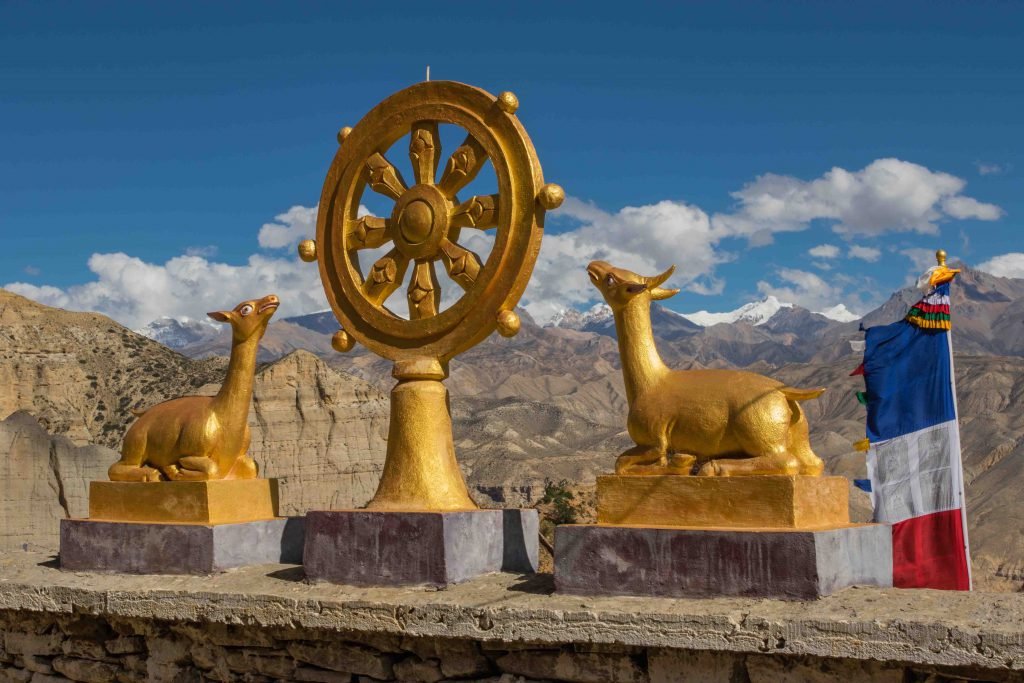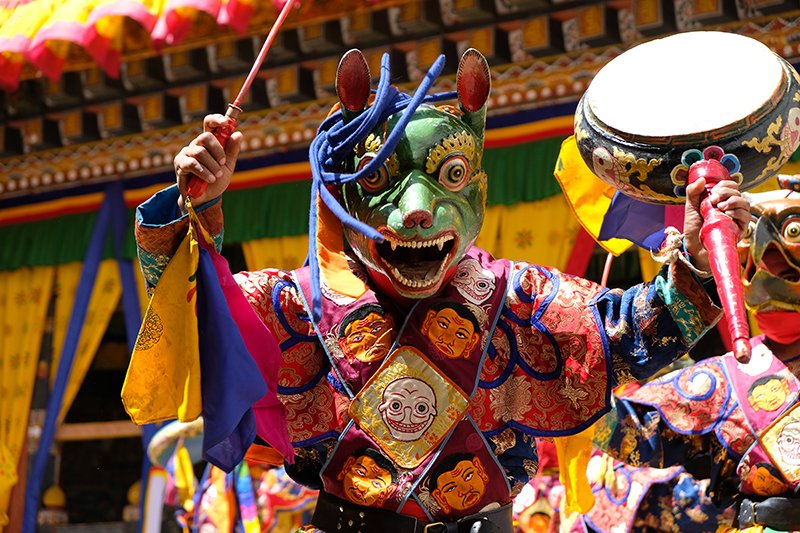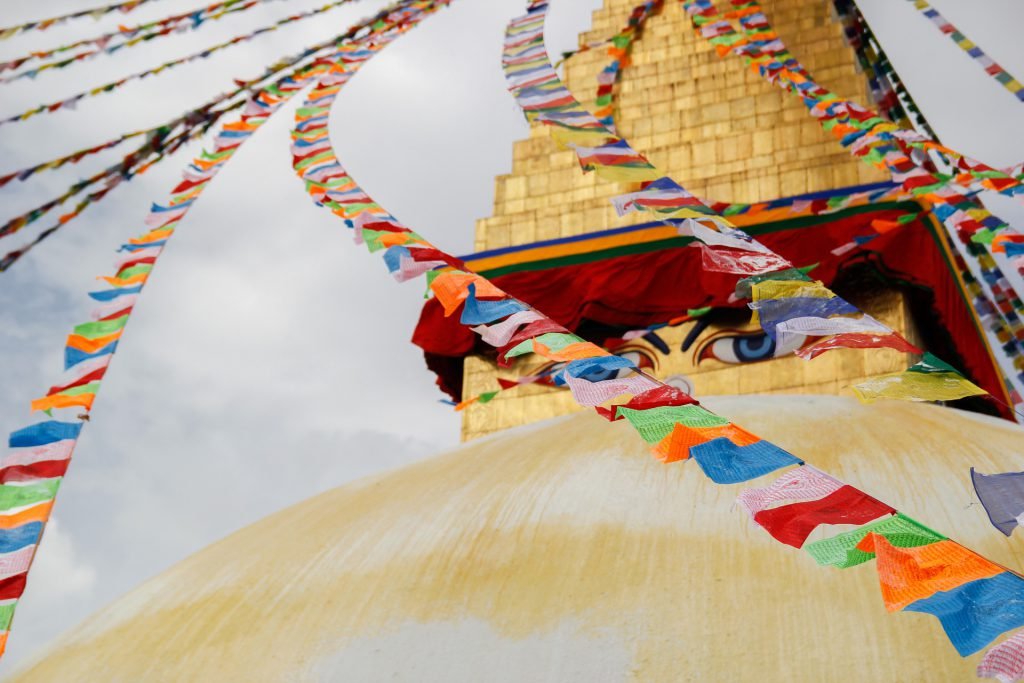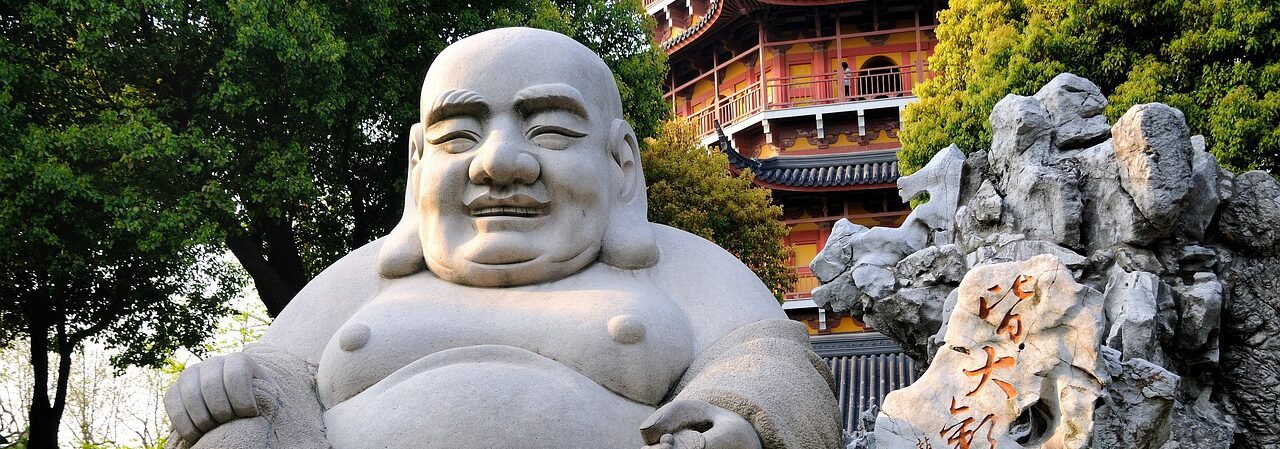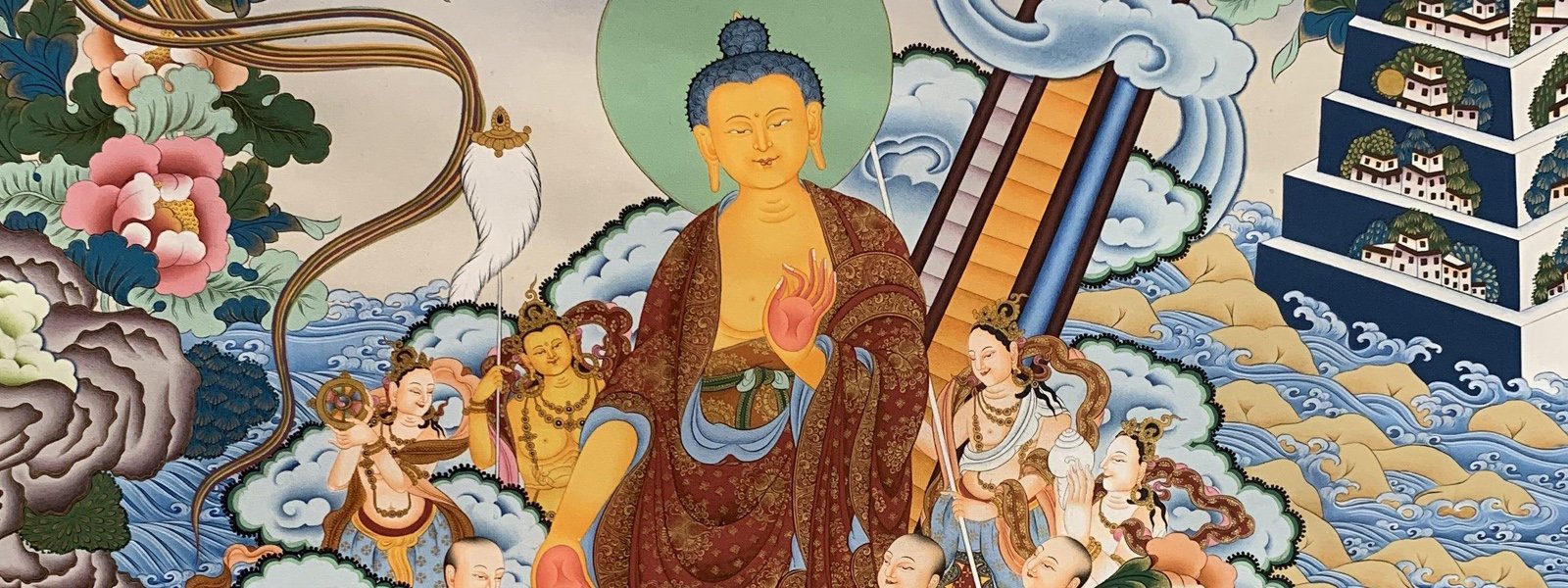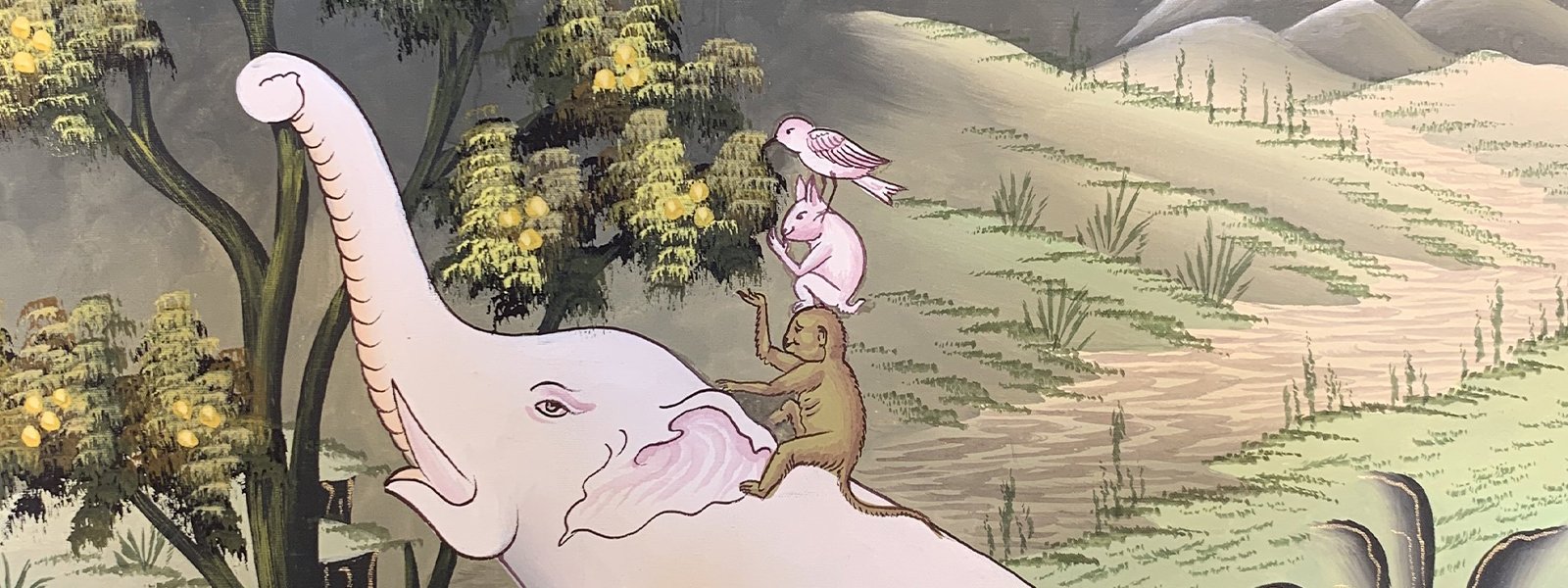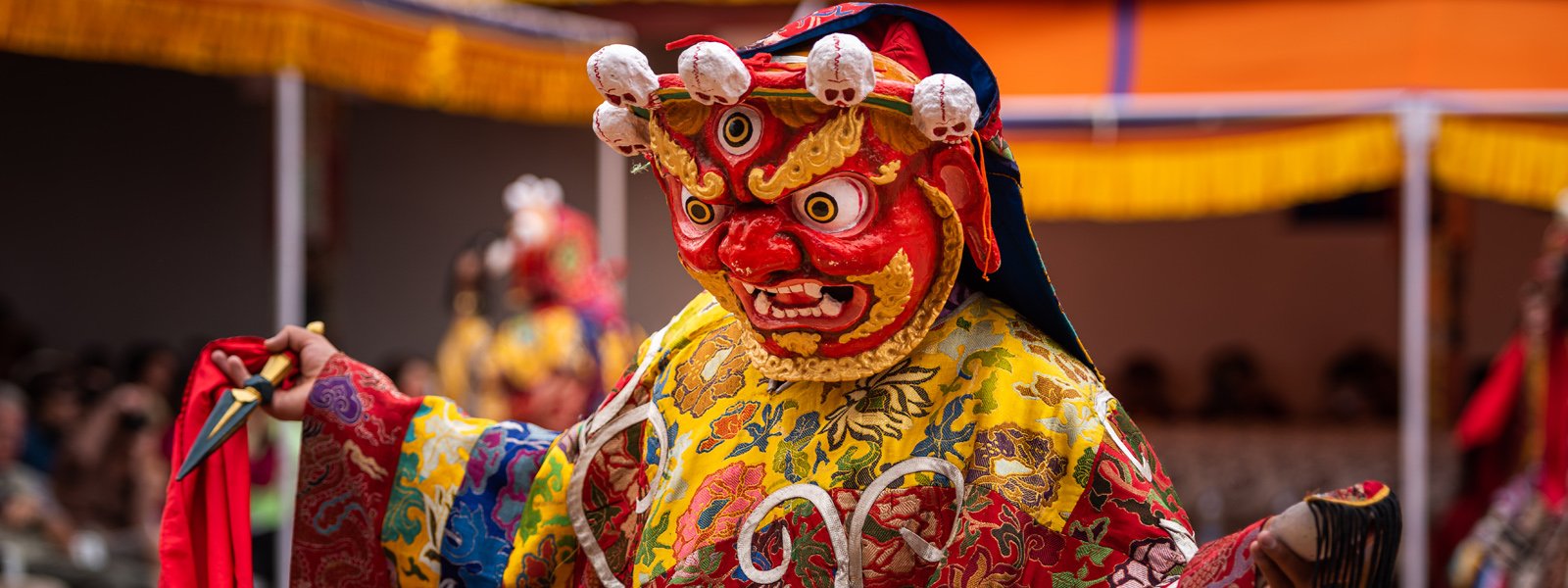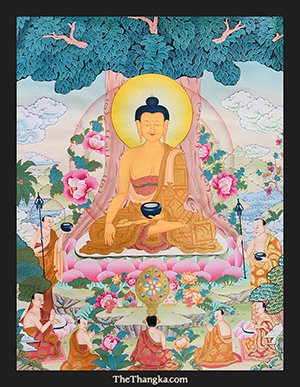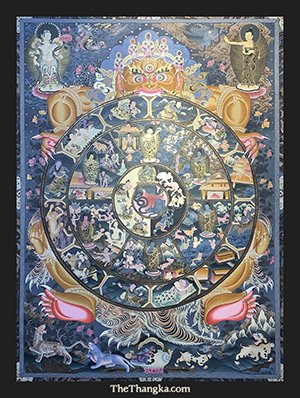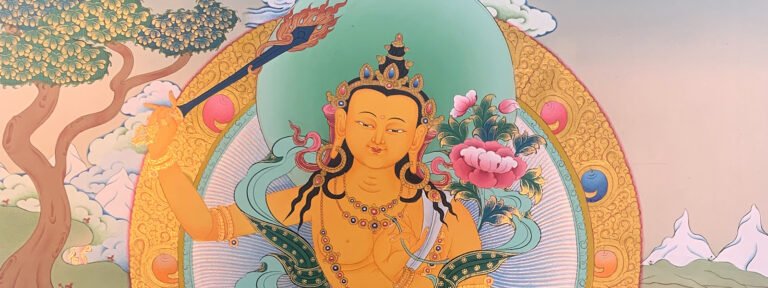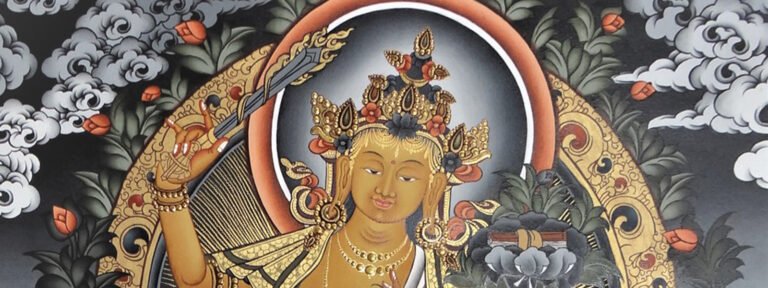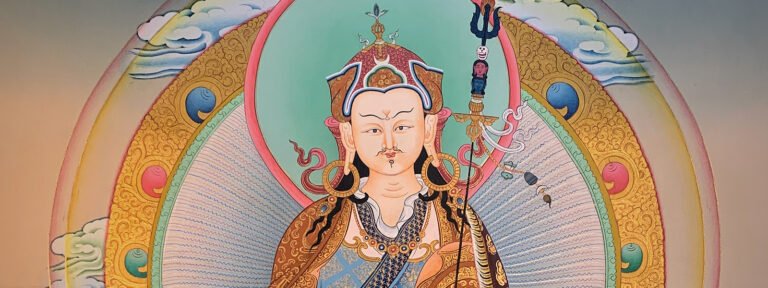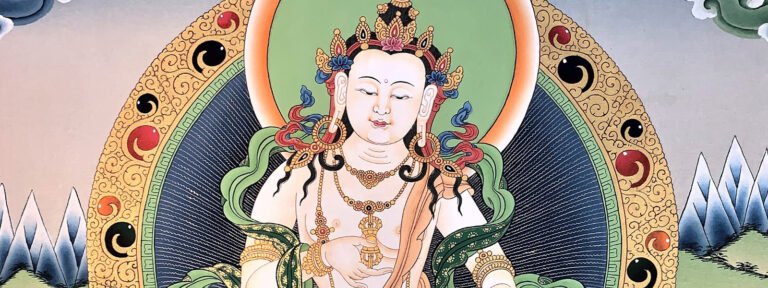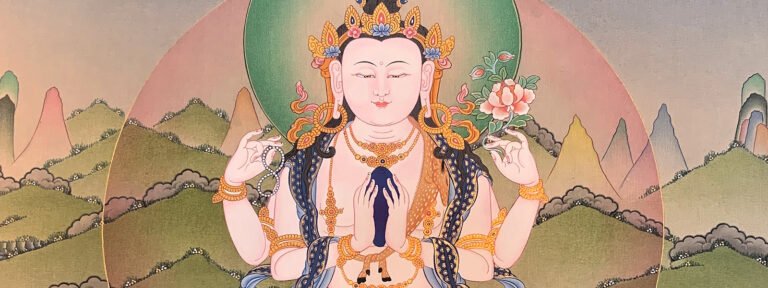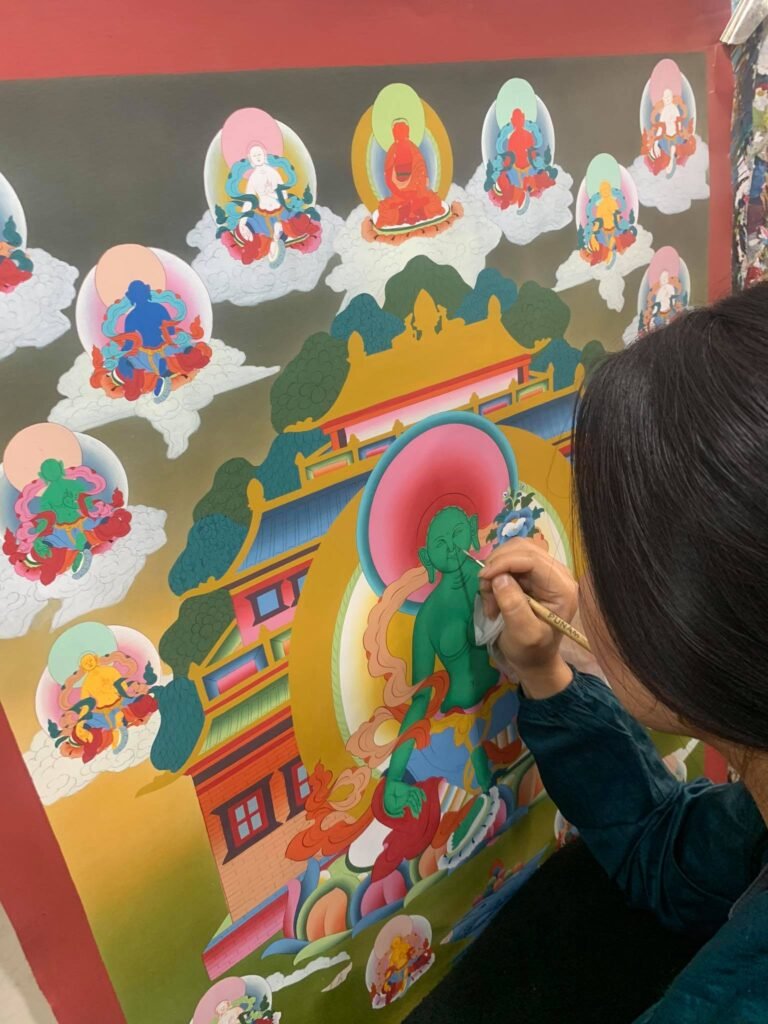White Tara (Sitatārā) is a Bodhisattva of compassion and action, associated with practices designed to lengthen one’s lifespan and to overcome life-threatening challenges. She is worshiped by practitioners of Vajrayana Buddhism to develop the qualities of compassion (karuṇā), loving-kindness (mettā) and emptiness (shunyata).
White Tara is depicted sat cross-legged in a meditative position atop of a blue lotus (Utpala) moon seat. She is notable for her 7 eyes, with a third eye in her forehead and the other four on the palms of her hands, and the upward facing soles of her feet. These eyes symbolise her compassionate vigilance, clear-sighted wisdom, and heartfelt compassion. Her left hand is poised in the protective mudra, and her right in the wish-granting mudra. In her left hand she holds the stem of a Utpala lotus flower.
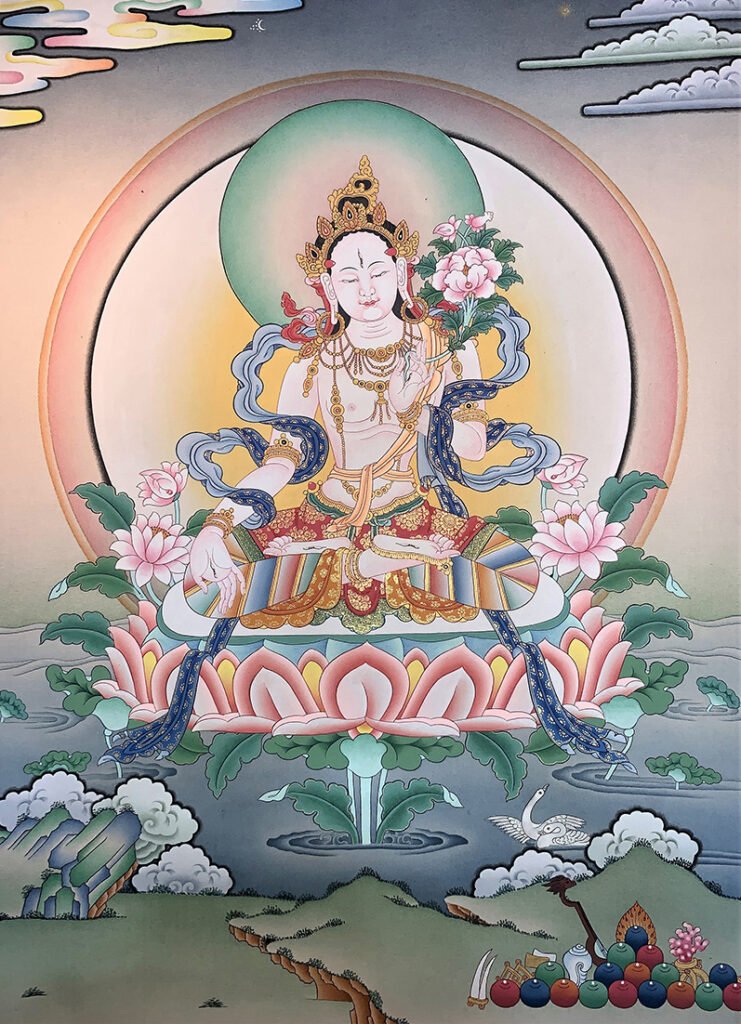
White Tara also goes by the name of Ārya Tārā, Shayama Tara and Jetsun Dölma (Tibetan), Tara Bosatsu (Japanese) and occasionally Duōluó Púsà (Chinese). Her name literally means “star”/“planet” and she is associated with navigation, both literally, and metaphorically. In Tibetan her name means “she who saves” and she is often referred to as a “mother”.
The earliest identifiable image of Tara is found within the Buddhist monastic complex of the Ellora Caves in Maharashtra, India, dating to the 7th Century CE. The Tara mantra used by Buddhists and Hindus alike is: “oṃ tāre tuttāre ture svāhā” which translates to “Oṃ O Tārā, I pray O Tārā, O Swift One, So Be It!”.

See White Tara in Figures
